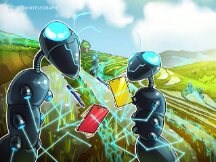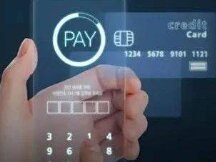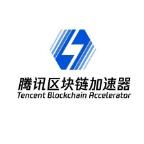Blockchain technology allows business enterprises to better integrate into rural support strategies.
2021 is the first year to achieve comprehensive poverty reduction and connect with rural support. How to promote rural support and development is a key question now.
Currently, rural support issues such as data asymmetry in economics and finance, chain integration and lack of rural household spending. Central information number
With the development of new generation information technology, especially blockchain technology, there is an opportunity to solve the problems encountered in rural areas. As a basis of accountability, commercial banks can use blockchain, a more secure, open and transparent technology to improve rural financial services, promote the integration of materials and needs, and the creation of a loan for rural households. . , help cities make better digital upgrades. It is playing a bigger role in other areas and is working to create a rural economy. This is not only an indication of corporate social responsibility, but also the essence of the digital transformation of banks.
Our problem lies in integrating rural support strategies into finance
While the poverty reduction plan in 2020 is completed, the central government in the 14th five-year plan "Improve rural financial services, improve financial support for sustainable development." agriculture and expand rural support. Financing secured by mortgage on assets. »Provides rural-oriented services to strengthen and strengthen endogenous structures.
Based on key state proposals, enterprises, based on their own financial services sector, promote rural support of economy and finance, and promote economic development and city economic development . On the other hand, by providing credit support to rural businesses, it facilitates the exchange of profitable businesses in rural areas. problems and support to address the weaknesses and shortcomings of the rural economy. Currently, rural support still faces many problems, mainly related to rural economic development and financial development, including the following three points:
(1) The problem of data asymmetry of materials and needs within rural industry. At this stage, the agricultural industry is still made up of agricultural products, and the process of agricultural products is scarce, making it difficult for consumers to identify and determine the characteristics and capabilities of agricultural products. goods. In addition, agricultural products are often located in remote areas, so the consumer market often needs more connections, and data blocking of these connections has become a problem.
Compared to companies that have strict product and quality control procedures, these products are difficult to identify and often lack oversight in their manufacturing process. The lack of useful data makes it difficult for many consumers to select agricultural products, and in extreme cases opaque materials can lead to uncertainty, ultimately affects agricultural products, which has a major impact on the growth of the market. rural economy. .
(2) The chain of rural industries is highly concentrated. Currently, the rural economy is mainly run by the government and supplemented by financial institutions such as corporations and corporations. However, the government industry-led model has not yet established a full integration of business integration, tracking and integration, so the integration data sharing is not complete and it is difficult for companies to provide full services. Changes in rural financial needs, uncontrolled timing of financial needs.
Furthermore, in rural areas, agricultural sales are often based on a combination of sales, and establishing and operating the base also requires significant capital and early technology ventures. Correspondence creates exchange rates and works well for both parties. also weak.
(3) Rural loans are not enough. Currently, the credit rating of rural residents is poor, and financial institutions are struggling to obtain the general credit information necessary for the credit ratings of rural consumers. It also affects the financial system, some of which are. Some rural support programs focus on economic development and exclude the development of rural finance, making it difficult for farmers to obtain loans and purchase manufacturing equipment such as plant and supplies, fall into a deadlock. vicious circle. Unable to borrow - unable to produce - unable to borrow more. It is difficult for these farms to increase their credit scores, which contradicts the idea of human health among the rural population.
Blockchain technology helps improve rural communities.
Faced with the various challenges of rural revitalization, the Central Committee of the Chinese Communist Party and the Council of State n. 1 Data on total support for rural revitalization and acceleration of agricultural and rural modernization are provided in No. 1. 1 of the Central. Committee for 2021. The main role is to improve modern agriculture and rural areas with the strength of the party and the people, ”he said.
Information technology and application modification, represented by 'blockchain', at an important time in supporting rural support, can help businesses reduce some of the problems associated with rural support. Blockchain, a new type of data technology, is the true nature of the distribution, the distribution of data, all participants called node, the data is closed and stored in blocks. According to the terms of trade, these blocks have been brought together to form a complete and continuous blockchain system. Blockchain technology has the following characteristics.
(1) Decentralized decentralization. Each node collects the data exchange and stores the data in the cloud, so that each node can be hosted and the system can realize self-regulation without waiting at the center. Channel records are closed and stored by various parties to include recording, storing and modifying data.
(2) The information is public, transparent and traceable. As data grows on the blockchain, timestamps are added to the blocks it traverses in order to analyze product data. When a file is closed, all nodes interact to determine whether the file is properly closed.
(3) Smart contracts. The smart contract on the blockchain is the bootstrap protocol that is stored on the blockchain and executed using the preconfigured rules. Since all information on the blockchain is public and transparent, the contractor can share the information that arrives at the exchange.
Now, to solve the above problems of our rural recovery problem, improve product analysis, reduce data asymmetry and iron overload chain issues, increase the efficiency of all rural advocacy participants and establish urban credit systems and ecology. Closed-loop system, many domestic and foreign companies began to use blockchain to develop rural industry, three features of blockchain distribution, decentralization and traceability have been practiced in production, construction and industry. Agricultural products strive to solve problems.
Although most of these experiments were started by online businesses, they have accumulated a lot of valuable knowledge in blockchain applications for businesses to support rural support. The following table describes the state of domestic and foreign blockchain support for these domains.

It can be seen from the table that the use of blockchain technology by domestic and foreign markets in various contexts, such as production monitoring, equipment and industry connections, joint ventures, creation of loans to farmers and financial support, reduced the existing three. rural revitalization. A little.
The first is to document the asymmetry of the products and needs of the rural economy. The time-stamping process of all integrated production, sales and marketing processes in the agricultural industry is used to ensure the record of the copy of the product, so that both parties can understand each other's information by a glance.
The second is the highest concentration of urban-rural products. In Cangzhou Technology's Chain Chat agricultural products project, if agricultural products are "on the chain", more information of agricultural products is placed on the chain, reduce the light problem in the middle and avoid too much information .
The third is the development of rural financial and credit systems. According to this blockchain data, credit farmers are integrated into their own credit system, which is the basis of cost risk management and credit risk management. .
Dependence on Blockchain Application in Financial Markets
The application of blockchain in urban revitalization has broad prospects and unlimited capacities, but now the practical application is mainly driven by internet companies and the traditional commercial bank has little involvement in blockchain projects.
The application of blockchain technology by Internet companies has important applications for businesses, but the application of blockchain by companies can vary from company to company due to differences in business, industry and regulatory standards. Therefore, in this article, we propose to jointly support the application of blockchain technology at the intellectual and strategic level.
(1) Information
Banks should first introduce blockchain technology to reduce the painful content that exists in rural support, ensure data traceability, facilitate more data in theory, make smart contracts in the same way, and create a rural economy.
1. Know the data traceability. Commercial banks use data traceability to reduce the risk of fraud, improve the reliability of business information, and comply with data compliance requirements. Presenting information to everyone through transparency and data traceability can reduce the risk of data asymmetry.
At the same time, since the production data is fully transparent, consumers can clearly see all the links between production and sales through the terminal, and any expansion of agricultural products is "invisible". Thus, it can give consumers confidence in the product. It is also easy for users and suppliers to monitor and control once each process has been clearly marked on the chain.
2. Reduce data overload. Commercial banks can use blockchain to send information from government and multiple platforms to participants across the chain, improving the quality of data collection for all parties, reducing transaction costs and saving money by human ressources. At the same time, for banks that demand higher security, reducing too much data can lead to guarantee full risk when the base rate does not work, reduce the risk.
3. Make smart contracts. Since information is available in all parts of the blockchain, banks can combine business, political, and other information to get on-demand information for a wide range of products in different copies. Companies can complete the data integration, integrate all production data in the chain across the country with sales, and finally create the data transfer to the content layer sent to customers in need of goods. The way businesses have become “shared organizations” of data and information will reduce the human and material resources of their connections.
4. Establish a rural credit union. When a farmer provides information about the manufacturing, shipping, and marketing links in a chain, their assets are also stored on the chain. As a result, commercial banks can create a rural economy based on blockchain payload data. This will facilitate the risk assessment of agricultural assets by the banking sector, greatly reducing the problem of "difficult borrowing and finding credit", and reduce the number of farm families to obtain bank loans. There will also be a reduction in the availability of production funds.
(2) practical level
When paying for the application of blockchain technology, business entities need to develop knowledge of the rural financial system at the industry level. By researching blockchain to support rural development, one can see that the biggest problem in the practical use of blockchain is not the immaturity of the use of technology, but the lack of practical knowledge. Rural support makes the application of these blockchains not integrated into closed-loop blockchain ecosystems and difficult to integrate. limit. This shows that rural support is not only a problem of economic development and financial problems, but also a lack of an ecosystem that integrates economics and finance.
Commercial banks, which are the basis for building credit for relationships, distributing money and providing financial services, have always been instrumental in establishing a rural financial system and in connecting governments, businesses and farmers. The application of blockchain technology from commercial banks should not be limited to a single link, but should be based on all strategic considerations and should focus on establishing new rural support based on blockchain technology, promoting the rural economy and building a financial ecosystem. It provides a comprehensive paradigm for improving rural financial services.
Using blockchain technology, the platform can realize intelligent communications, shipment tracking and data storage, farmer management and financial services. . the. Establish a vital working circle, and finally a rural operation of "cross-border, support, cooperation and integration", allowing business companies to carry out the transformation of the "single branch" to support the whole “ecological chain”. rural revitalization. As blockchain fosters rural support, commercial banks can continue to support digital development in rural areas.
With the completion of the poverty reduction project by 2020, the rural development phase, which now includes benefits for poverty reduction, offers a broader status and level of implementation for the application. and the development of blockchain technology.
As a business, we need to harness the benefits of blockchain technology and actively integrate digital exchanges through the integration of modern digital data with blockchain as a whole and support for rural areas, and affect the role of banks in rural support. At the same time, giving national governance to digitization and modernization will strengthen the good governance and governance capacity of the country, and will play an important role in economic, business and community development.

Scan QR code with WeChat










